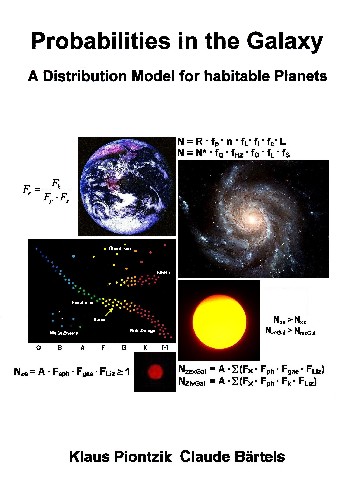| Basically, the model presented so
far consists of 6 equations. The special basic model for habitable " Earths 2" in solar-like star systems is: 6.3.3 Equation Nze = A·Fsph·Fgae·FLiz The general basic model for habitable "Earths 2" in the galaxy is: 8.4.2 Equation NzexGal = A · ∑ (FX · Fph · Fgae · FLiz) The general approach for habitable planets in the galaxy is: 12.2.2 Equation NzivGal = A · ∑ (FX · Fph · Fk · FLiz) As well as the three equations, which contain all necessary probabilities concerning planetary adhesion, habitable zone, earth similarity, life, intelligence and civilization:
|

|
176 sides, of them 64 in Color 76 pictures 11 tables Production and publishing: Books on Demand GmbH, Norderstedt ISBN 9-783-7528-5524-1 Price: 22 Euro |
|